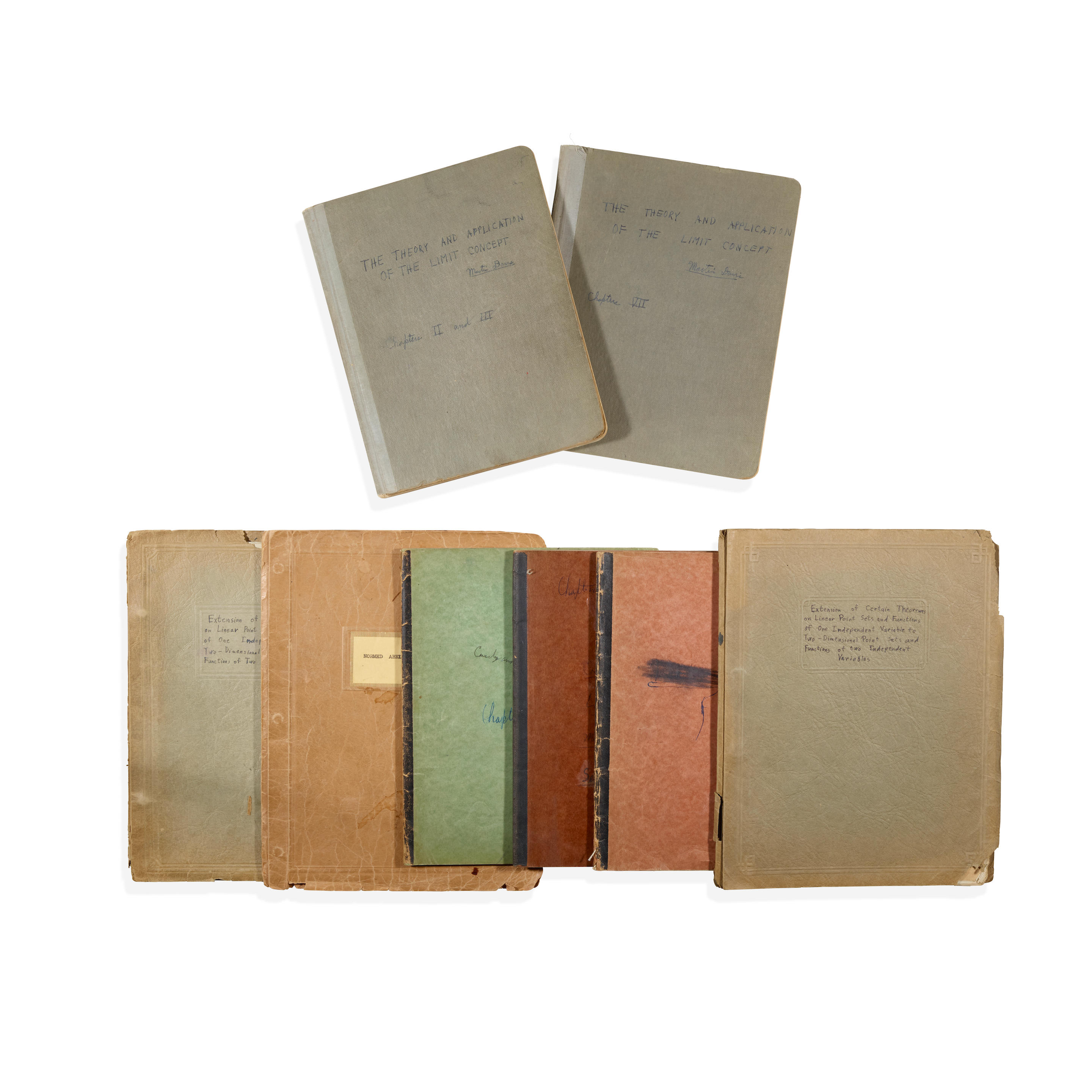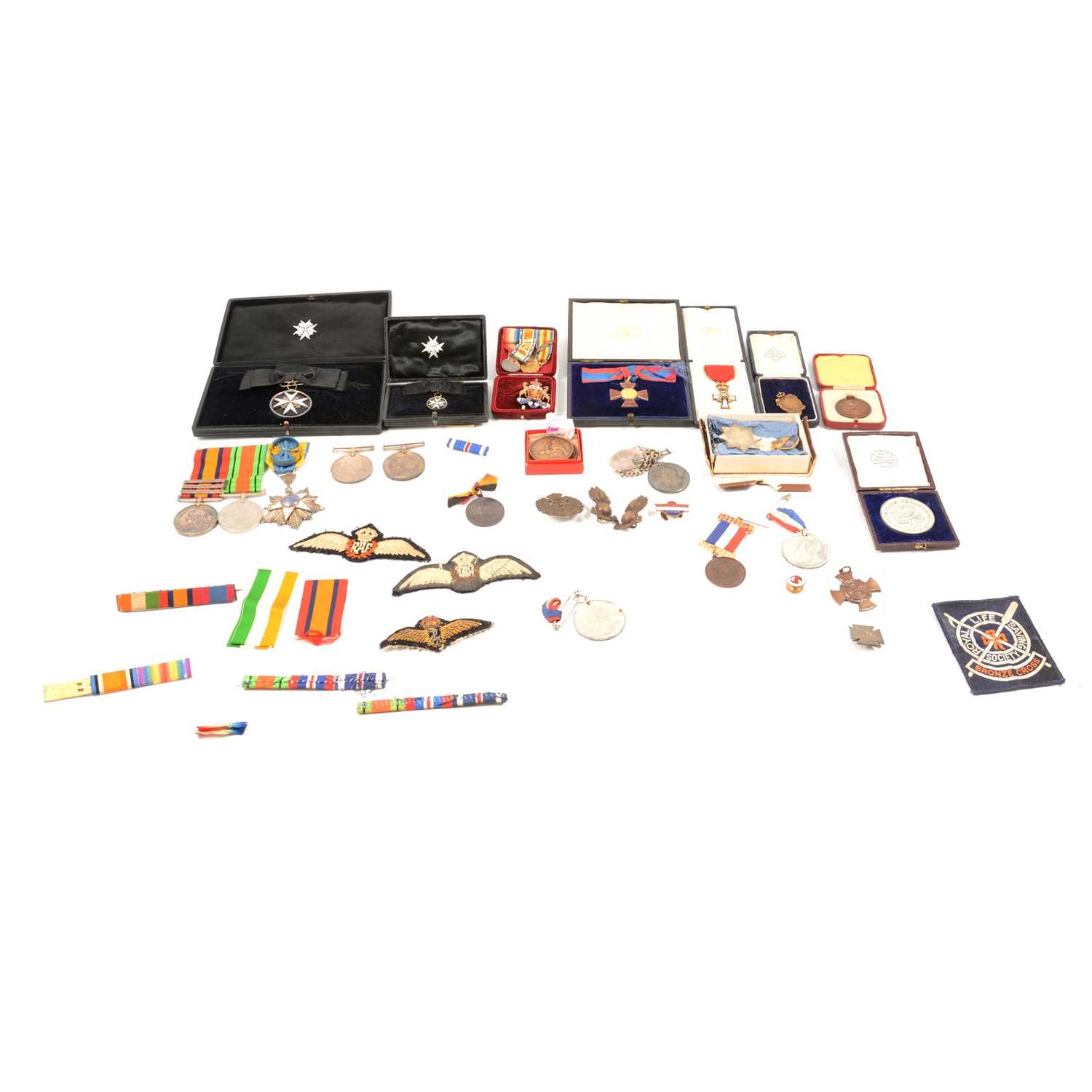A Collection of Awards for the Indian Mutiny 1857-59 The Indian Mutiny and North West Frontier campaign pair to Brigadier-General O. E. Rothney, C.B., C.S.I., 4th Sikh Infantry (late Rothney’s Sikhs), Commandant of the 5th Gurkhas 1860-73 Indian Mutiny 1857-59, 1 clasp, Delhi (Bt. Maj... O. E. Rothney, 4th Sikh Infy.) suspension claw re-affixed and loose; India General Service 1854-95, 1 clasp, North West Frontier (Major. O. E. Rothney, 4th Sikh Inftry.) contact marks overall, therefore good fine or better (2) £2400-2800 Footnote Provenance: DNW, September 2004. Octavius Edward Rothney, the son of Alexander Rothney, of Mile End Old Town, a Sub-Inspector of the Military Stores Department, H.E.I.C.S, was born on 13 March 1824, and educated at Christ’s Hospital. He was nominated for the Bengal Service by G. Lyall, Esq., on the recommendation of Lieutenant-Colonel Bonner. Commissioned in June 1841, he arrived at Fort William aboard the Becephalus on 6 November of that year and was posted to the 45th Bengal N.I. at Dacca in December. Having been promoted Lieutenant and having qualified as an Interpreter, he was appointed to the 11th Bengal Cavalry at Loodianah and served with that corps during the Sutlej campaign (not entitled to a medal). In October 1846 he rejoined the 45th N.I. and proceeded towards the Kashmir frontier with General Littler’s force against Sheikh Emamoodeen. In 1848 Rothney was appointed Adjutant of the newly raised 4th Sikh Infantry (later 4-12th Frontier Force). In December 1851, he joined the 3rd Sikhs as second-in-command, and, from December 1852 until January 1853, took part in the expedition under Lieutenant-General F. Mackeson against the Hassanzais on the North West Frontier. He rejoined the 4th Sikhs as Commandant on active service in Burma in March 1854, when he was placed in charge of a chain of outposts in recently annexed Pegu where he fought several engagements with the rebel leader Goung Gee. The outbreak of the Mutiny in 1857 found Rothney and Lieutenant Williams, his Adjutant and the only other British officer with the corps, at Loodianah. On 8 June 3,000 mutineers arrived from Jullundur calling on the Sepoys of the 3rd Bengal N.I. to rise in revolt. Rothney, however, managed to hold ‘the town and fort in check’ and protect ‘the cantonment with the main body of [his] regiment’ until the mutineers had passed. A few days later Sir John Lawrence ordered Rothney’s Sikhs to Delhi, where they arrived on 23 June, and subsequently played a prominent role in the siege, storm and capture of the city. Rothney was promoted Major by Brevet and mentioned in despatches for services at Delhi. In March 1858, he was summoned back to Delhi by Sir John Lawrence to serve as a member of the Military Court which sat in judgement on Bahadur Shah II. Rothney was next actively employed with the 4th Sikhs in December 1859, under Sir Neville Chamberlain (qv), in the expedition to punish the Kabul Khel Waziris for harbouring the murderers of Captain Richard Mecham, and was present at the affair of Maidanee. On 23 March 1860, Rothney was transferred to officiate as Commandant of the Hazara Gurkha Battalion, which was then marching for field service under Chamberlain against the Mahsud Waziris who had attacked the frontier town of Tank. The Mahsud Waziris were estimated at a strength of between four and seven thousand, and accordingly a large force was assembled. The force was split into two and Rothney remained with the part left in camp at Palosin under the command of Colonel Peter Lumsden of the Guides. At reveille on 23 April 1860, 3,000 Mahsud Waziris attacked the camp which such ferocity that Lumsden lost 63 killed and 166 wounded. Lumsden afterwards recorded: ‘I had my clothes half on, ready for any emergency, and immediately took my inlying picket out to the ridge and placed them so as to rake the face of the ridge down which they were coming, and then returned to my Guides, who, though surprised in their tents and th
A Collection of Awards for the Indian Mutiny 1857-59 The Indian Mutiny and North West Frontier campaign pair to Brigadier-General O. E. Rothney, C.B., C.S.I., 4th Sikh Infantry (late Rothney’s Sikhs), Commandant of the 5th Gurkhas 1860-73 Indian Mutiny 1857-59, 1 clasp, Delhi (Bt. Maj... O. E. Rothney, 4th Sikh Infy.) suspension claw re-affixed and loose; India General Service 1854-95, 1 clasp, North West Frontier (Major. O. E. Rothney, 4th Sikh Inftry.) contact marks overall, therefore good fine or better (2) £2400-2800 Footnote Provenance: DNW, September 2004. Octavius Edward Rothney, the son of Alexander Rothney, of Mile End Old Town, a Sub-Inspector of the Military Stores Department, H.E.I.C.S, was born on 13 March 1824, and educated at Christ’s Hospital. He was nominated for the Bengal Service by G. Lyall, Esq., on the recommendation of Lieutenant-Colonel Bonner. Commissioned in June 1841, he arrived at Fort William aboard the Becephalus on 6 November of that year and was posted to the 45th Bengal N.I. at Dacca in December. Having been promoted Lieutenant and having qualified as an Interpreter, he was appointed to the 11th Bengal Cavalry at Loodianah and served with that corps during the Sutlej campaign (not entitled to a medal). In October 1846 he rejoined the 45th N.I. and proceeded towards the Kashmir frontier with General Littler’s force against Sheikh Emamoodeen. In 1848 Rothney was appointed Adjutant of the newly raised 4th Sikh Infantry (later 4-12th Frontier Force). In December 1851, he joined the 3rd Sikhs as second-in-command, and, from December 1852 until January 1853, took part in the expedition under Lieutenant-General F. Mackeson against the Hassanzais on the North West Frontier. He rejoined the 4th Sikhs as Commandant on active service in Burma in March 1854, when he was placed in charge of a chain of outposts in recently annexed Pegu where he fought several engagements with the rebel leader Goung Gee. The outbreak of the Mutiny in 1857 found Rothney and Lieutenant Williams, his Adjutant and the only other British officer with the corps, at Loodianah. On 8 June 3,000 mutineers arrived from Jullundur calling on the Sepoys of the 3rd Bengal N.I. to rise in revolt. Rothney, however, managed to hold ‘the town and fort in check’ and protect ‘the cantonment with the main body of [his] regiment’ until the mutineers had passed. A few days later Sir John Lawrence ordered Rothney’s Sikhs to Delhi, where they arrived on 23 June, and subsequently played a prominent role in the siege, storm and capture of the city. Rothney was promoted Major by Brevet and mentioned in despatches for services at Delhi. In March 1858, he was summoned back to Delhi by Sir John Lawrence to serve as a member of the Military Court which sat in judgement on Bahadur Shah II. Rothney was next actively employed with the 4th Sikhs in December 1859, under Sir Neville Chamberlain (qv), in the expedition to punish the Kabul Khel Waziris for harbouring the murderers of Captain Richard Mecham, and was present at the affair of Maidanee. On 23 March 1860, Rothney was transferred to officiate as Commandant of the Hazara Gurkha Battalion, which was then marching for field service under Chamberlain against the Mahsud Waziris who had attacked the frontier town of Tank. The Mahsud Waziris were estimated at a strength of between four and seven thousand, and accordingly a large force was assembled. The force was split into two and Rothney remained with the part left in camp at Palosin under the command of Colonel Peter Lumsden of the Guides. At reveille on 23 April 1860, 3,000 Mahsud Waziris attacked the camp which such ferocity that Lumsden lost 63 killed and 166 wounded. Lumsden afterwards recorded: ‘I had my clothes half on, ready for any emergency, and immediately took my inlying picket out to the ridge and placed them so as to rake the face of the ridge down which they were coming, and then returned to my Guides, who, though surprised in their tents and th














Testen Sie LotSearch und seine Premium-Features 7 Tage - ohne Kosten!
Lassen Sie sich automatisch über neue Objekte in kommenden Auktionen benachrichtigen.
Suchauftrag anlegen